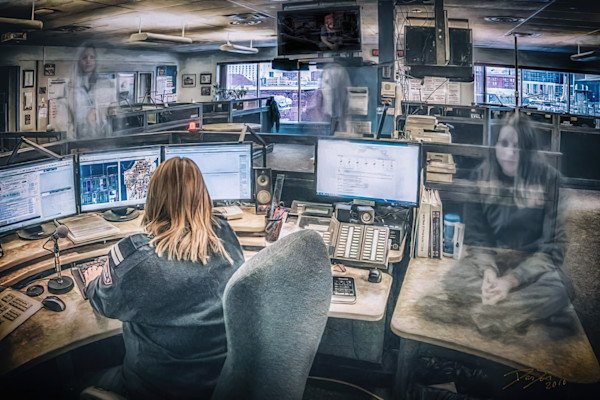How many times, in your 911 career, have you released the transmit button after speaking to an officer and mumble words similar to, “Wow, what a grouch (or maybe some other words), you want me to write the report for you too?” or “Geez, can’t you listen to me the FIRST time I give you the information?”
Communication by definition is defined as:
- The imparting or exchanging of information or news.
- A means of sending or receiving information, such as phone lines or computers.
This is what Telecommunicators DO! We receive training to become expert communicators, so why, at times, is it so difficult to communicate a simple call for service? The answer is not necessarily in the act of communication, it could be a perceived tone that is received on the other end of the mic. The first responder you are dispatching to may sound abrupt, annoyed, not paying attention, or even rude. It is exceedingly difficult not to respond with the same abrupt, annoyed, or rude pitch in your voice. It could also be a variety of other noise that interferes with what we are hearing versus what is being said. However, unless you are walking in the shoes of your receiver, you don’t really know what “noise” is interfering with your communication, and yes, that goes for both sides of the mic.
Communication noise is the barrier between effective communication and failed communication. All PSAPs have physical noise, from the smallest to the largest. Examples of the physical noise are other incoming calls, radio traffic, people may be coming in and out, talking in hallways or within the center. Have you ever been on a priority call while your co-workers told each other a funny story? Laughter in the background is instant noise for you, your caller, and your first responder.
You also have what is referred to as psychological noise. This is the noise interfering within yourself. For example, your parent is sick, your child is sick, you are sick, the bills total more than your income, relationship challenges, the list goes on and on. While there is evidence that the phrase, “leave your problems at home when you come to work” or “leave home at home when you walk through your employer’s door” are not always the healthiest advice if taken 100% literally. The ability to compartmentalize your life is not as easy as it may sound. Putting each section of our life into a box and only visiting it when we are in that box can be tough. Acknowledgment of the issue you’re facing may help you when you are walking in the door at work as well as when you step in your door at home. That said, there is evidence that letting your personal problems flow freely in the workplace is counterproductive, as in, it shifts your focus and mistakes happen – the consequences for a mistake in public safety can be costly. But even if you are able to keep your personal problems held down and keep your woes from flying through the workplace, it is still noise for you, noise that clashes when the officer asks for the 5th time what the address is or responds to the call with an “I guess I’ll be en route”.
Using law enforcement as an example – let’s look at the physical noise they may be dealing with when they are sent on a call. Many times, they are driving when the call comes in. Traffic, computers in the vehicle, and radio traffic interfere with what you are saying. Additionally, cell phone conversations may have been taking place, something you would have no idea of when you dispatch that call. Then comes the psychological noise, what is it they are responding to, do they have a backup, are they going to get home on time, what is the best strategy for the call, and the big elephant; what if something goes wrong. The list for first responders is extensive and this doesn’t cover anything that may be going on for them personally. When noise on both sides collides through the headset, the day can really take a nosedive!
So what is the solution? Many PSAPs do not have the ability to send the Telecommunicators out for an observation time or ride-along, with patrol or have patrol do observation times in the PSAP. Short-staffed and liability challenges make this impossible for some areas. Putting yourself in a patrol car with your public safety co-worker and having them come in and do observation for a couple of hours, is the best way to understand what each side faces every day. I remember a day when a severe storm swept through the area. In a room next to dispatch was a meeting taking place with multiple first responders. One fire chief came into dispatch to see if he could help. When it was over he said, “There are two places I have learned I don’t ever want to be during a thunderstorm, in the middle of a field and dispatch!” He learned a lot that day by being in the PSAP. When it is not possible to have that exchange, do your best to run scenarios through your mind or with your coworkers. Talk about what the responder may be going through on the way to the call, what are they thinking when they hear the call sent out as “shooting in progress”. Remember, you can only do what YOU can do. While there is no reason for rudeness, it happens, but understanding and empathy over what the reasons may be can help telecommunicators not go home mad at the end of the shift because of the perceived treatment during the day.


Recent Comments